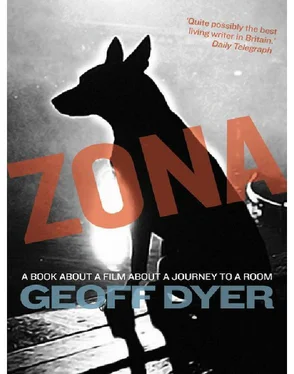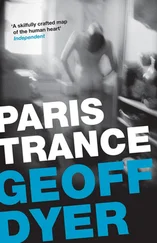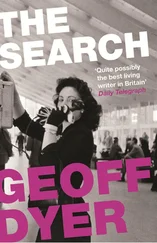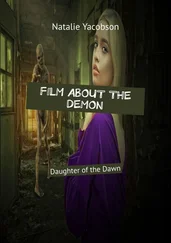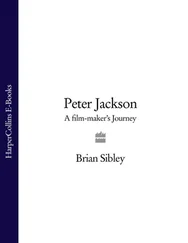Some further refinement — or labouring — of this point is necessary. It happens that the phase of my getting into serious cinema — in my late teens and early and midtwenties, from the mid-1970s onwards — overlapped with the intensely creative period of what might be called mainstream independent filmmaking, when American directors, having absorbed the influences of the European auteurs, carved out the freedom to realize their cinematic ambitions. I saw Taxi Driver when it was first released, and Apocalypse Now (and Jaws and Star Wars, which, together with the financial catastrophe of Heaven’s Gate, heralded the end of this phase).
I saw Stalker slightly later but I saw it when it came out, within a month of its release, when Tarkovsky was at his artistic peak. I saw it, so to speak, live. And this means that I saw it in a slightly different way from how a twentyfour-year-old might see it for the first time now, in 2012. So much so that the film I saw was slightly different from the one that a twenty-four-year-old would see now, in 2012. Obviously the difference is not as acute as it would be if you saw a band today who were at their peak twenty years ago. The thing, the product, the work of art stays the same but by staying the same it ages — and changes. It exists now in the wake of its own reputation, not quite in the way that Citizen Kane does, not only as a monument to itself, but trailing clouds of its own glory. And it exists also in the wake of everything that has come in its wake, both the films that have been influenced by it (that’s why Citizen Kane is both ageless and incredibly old-looking; practically everything seems to have come after it) and the ones that treat it with tacit disdain and contempt (Lock, Stock and Two —tediously— Smoking Barrels). The facts are unalterable. When I first saw Stalker it was brand new, the latest thing. I also saw Pulp Fiction live, as soon as it came out, but I didn’t see it as I saw Stalker, when I was at that point of maximum responsiveness or aliveness, when my ability to respond to the medium was still so vulnerable and susceptible to being changed and shaped by what I was seeing. At a certain point, even if you keep up-todate with new releases (books, records, films), even if you keep broadening your horizons, even if you manage to keep up with the latest things, you realize that these latest things can never be more than that, that they stand almost no chance of being the last word, because you actually heard — or saw or read — your personal last word years earlier.
32Or, of course, to Herzog himself, specifically the famous epigraph—‘Don’t you hear the terrible screaming all around you? The screaming that men call silence’—and shot of wheat swaying in the wind at the opening of The Enigma of Kaspar Hauser.
33I got that phrase from an aging acidhead in Santa Cruz, who first tripped back in the days when LSD was still legal. The difference between acid then and now, he said, was that in its earlier incarnations it produced ‘open-eye hallucinations’ (as opposed to closed-eye hallucinations and open-eye distortions). An open-eye hallucination: there are worse definitions of cinema.
34In Mirror the mother reads a poem by Tarkovsky’s father:
Everything on earth was transfigured, even
Simple things: the basin, the jug…
This is exactly what we get in Tarkovsky’s films and in…But let’s go back a bit, to the moment where Writer says, rather Tarkovskyly, that we are here — on earth, he means — to create works of art. Elide this claim with the lines of Tarkovsky’s father and we get something close to the passage in the ninth of the Duino Elegies, where Rilke wonders if
Perhaps we are here to say: house,
bridge, stream, gate, jug, fruit-tree, window—
at most: column, tower…But to say them, you must grasp them,
oh, to say them in a way that the things themselves
had never dreamt of being.
The poet ‘says’ these things; Tarkovsky shows them, enables us to see them more intensely than we can with the naked, non-cinematic eye. Rilke continues, sketching his poetics of the Zone:
Here is the time of the sayable, here its home.
Speak and avow. More than ever
the things that might be experienced are falling away, for
what ousts and replaces them is an imageless act.
Tarkovsky is preserving or making visible exactly what Rilke claims is disappearing — ironically, as it turns out, as a result of the amazing ubiquity of the image (‘our overcrowded gaze’, the poet terms it a few lines earlier). The Zone: refuge of meaning, hope of the unvanished. (This overlapping of Tarkovsky and Rilke is not as arbitrary as it might seem. Having immersed himself in Russian literature and thought after travelling through the land in 1889 and 1900, Rilke, in the words of one commentator, ‘came to feel that he could be that country’s voice. As he put it more than a decade later: “All the home of my instinct, all my inward origin is there.”’)
35It was this sequence, apparently, that prompted an official at a Mosfilm screening of the original, damaged version of the film shot by Rerberg to complain that it was out of focus: a rather strange complaint since there was nothing on which to focus.
36Cf. Bresson: ‘Shooting is going out to meet something. Nothing in the unexpected that is not secretly expected by you.’
37Tilda Swinton’s character — white wig, white shades, white cowboy hat, white mac — mentions this sequence in Jim Jarmusch’s vacuous The Limits of Control. She was apparently drawing on her own experiences as a student at Cambridge in the 1980s: ‘I saw Tarkovsky’s Stalker, and there’s a scene of that image — of a bird flying through a room of sand. And I’d been having that dream my whole life, or probably since before I was ten. I’ve stopped having it since seeing that film, but it really blew my mind that someone else would have exactly the same image somehow and put it in a film. That really informed my relationship with cinema: the idea that it is what’s unconscious.’
38I may have wanted to see it again immediately but that was impossible. I had to wait until it was showing at a cinema again. Of course it’s fantastically convenient, being able to see Stalker —or at least to refer to it — at home, on DVD, whenever the urge takes one. But I liked the way that my visits to the Zone were at the mercy of cinema schedules and festival programmes. In London or in any other city where I happened to be living I always looked through Time Out or Pariscope or the Village Voice in the hope that Stalker would be playing. If it was showing somewhere, then seeing it became a priority, an event that gave shape to the surrounding week. Like this, the Zone retained its specialness, its removal from the everyday (of which it remained, at the same time, a part). Getting there was always a little expedition, a cinematic pilgrimage. As was entirely appropriate to the Zone, the film changed slightly, manifested itself differently according to where it happened to be found: the fact that I was seeing Stalker in a tiny cinema in the Fifth arrondissement of Paris — the same cinema, in fact, where I had sat through L’Avventura — made it a slightly different experience to seeing it as part of a Tarkovsky retrospective at Lincoln Center in New York. But what about the possibility of a cinema as semipermanent pilgrimage site? Bresson believed that the riches offered by certain films were so inexhaustible that ‘there ought to be in Paris one quite small, very well equipped cinema, in which only one or two films would be shown each year.’ Taking this a stage further, how about a cinema dedicated to showing Stalker exclusively? (For a less rapturous take on such a possibility see David Thomson on page 159.)
Читать дальше
